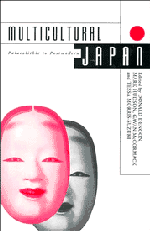Book contents
- Frontmatter
- Contents
- List of Figures and Tables
- List of Contributors
- Abbreviations
- Introduction
- Part 1 Archaeology and Identity
- 1 The Japanese as an Asia-Pacific Population
- 2 North Kyushu Creole: a language-contact model for the origins of Japanese
- 3 Beyond Ethnicity and Emergence in Japanese Archaeology
- 4 Archaeology and Japanese Identity
- Part 2 Centre and Periphery
- Part 3 Contact with the Outside
- Part 4 The Japanese Family
- Part 5 Culture and Ideology
- Afterword: Diversity and Identity in the Twenty-First Century
- Index
2 - North Kyushu Creole: a language-contact model for the origins of Japanese
Published online by Cambridge University Press: 05 November 2011
- Frontmatter
- Contents
- List of Figures and Tables
- List of Contributors
- Abbreviations
- Introduction
- Part 1 Archaeology and Identity
- 1 The Japanese as an Asia-Pacific Population
- 2 North Kyushu Creole: a language-contact model for the origins of Japanese
- 3 Beyond Ethnicity and Emergence in Japanese Archaeology
- 4 Archaeology and Japanese Identity
- Part 2 Centre and Periphery
- Part 3 Contact with the Outside
- Part 4 The Japanese Family
- Part 5 Culture and Ideology
- Afterword: Diversity and Identity in the Twenty-First Century
- Index
Summary
Japanese as a Contact Language
The sociolinguistic model proposed in this chapter outlines a languagecontact scenario for the origins of Japanese, in contrast to the lineal descent model which has dominated discussions of the topic. In contrast to most previous theories, I suggest that archaic Japan displayed multilingual heterogeneity involving several language communities out of whose mixture and contact evolved a pidgin-creole.
In all societies and at every time, language contact and multilingualism have been the norm. Likewise, Japan's linguistic history cannot be characterised by a linear progression nor by a single event but by successive episodes of language mixing. The view proposed here is that the Japanese language developed as a lingua franca in a multilingual environment. Thus, there is no indexable substrate language for Japanese since there was no single substrate; instead, Japanese developed from several speech communities possessing more than one language variety. In recasting Japanese as the product of heterogeneous sociolinguistic pressures, I suggest that the most suitable characterisation of Japanese is that of a pidgin-creole. The linguistic polymorphism of the Japanese is mirrored in their genetic and cultural polymorphism. The population history of Japan (see chapter 1) provides further support for the linguistic model proposed here.
Almost all studies of the origins of the Japanese language have concentrated on reconstructing an original pro to-Japanese, typologically related to a single language derivative, say Tungusic or Korean or an ancestral Austronesian. But what might a sociolinguistic reconstruction of early Japan look like?
- Type
- Chapter
- Information
- Multicultural JapanPalaeolithic to Postmodern, pp. 31 - 45Publisher: Cambridge University PressPrint publication year: 1996
- 3
- Cited by



